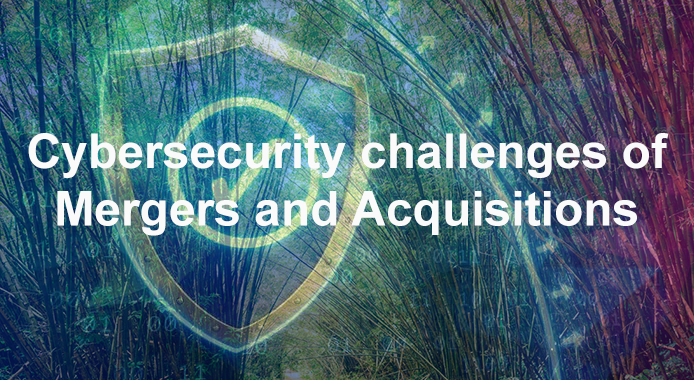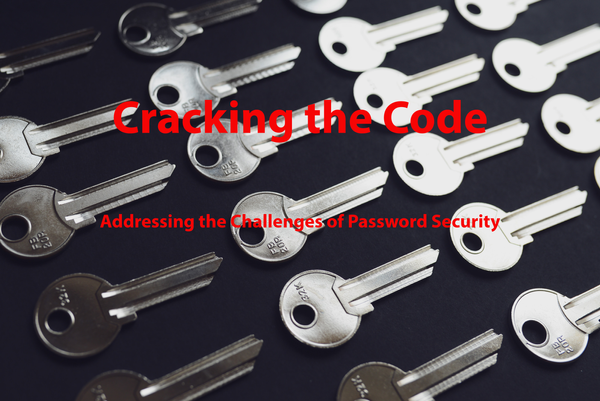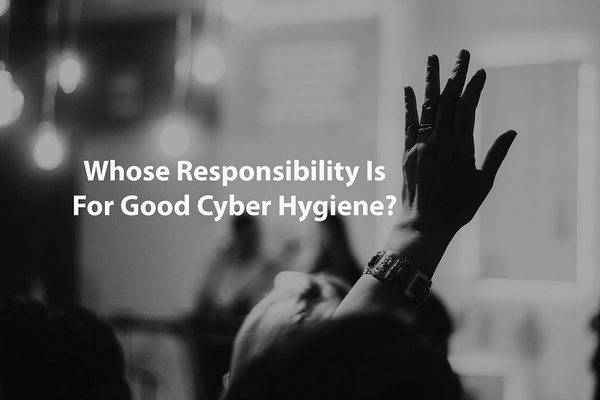Cybersecurity Challenges of Mergers and Acquisitions
Originally published at https://cyberbakery.net on November 13, 2021.

Originally published at https://cyberbakery.net on November 13, 2021.
We hear about new mergers and acquisitions(M&A) daily. Companies announce acquiring another in multi-million/billion-dollar deals. Most of the time, such deals are good news for the investors and the companies. However, cybersecurity is often overlooked in such transactions exposing them to cyberattacks. This post explores the cybersecurity risks and challenges of M&As.
Cybersecurity vulnerabilities of merging organisations can have devastating impacts on M&A activity. Often poor cyber risk due diligence and failures to implement post-merger processes have catastrophic exposures. The extent of the complexities of the cybersecurity issues is evident from the Marriott International and Equifax data breaches. Marriot International acquired Starwood Hotels in 2016. Starwood’s IT systems were breached sometime in 2014, which remained unknown till 2018 when Marriot started integrating their booking system. Marriot in 2018 reported that internal security discovered a suspicious attempt to access the internal guest database. This prompted internal investigations, which found that the hackers had encrypted and stolen data containing up to 500 million records from their booking system.
In March 2017, Equifax reported a data breach involving 148 million records that resulted in a US $1.4 billion loss. Equifax’s growth strategy was blamed for this breach, which was based on aggressive mergers and acquisitions. The acquired companies brought a disparate system, poor basic hygiene, and inconsistent security practices exposed the company to such losses.
These two incidents underline the issues with M&A activities unless carefully managed before and after the acquisitions. IT Teams gets under immense pressure to integrate acquired companies immediately after the acquisition. It is often found that the IT teams were never consulted during the due- diligence process before the acquisition resulting in the risk assessment that is not aligned with the overall business context.
What should be the approach to M&A due diligence and avoid incidents like Marriot International and Equifax breaches? To understand the security gaps, it is important to understand the acquisition or the merger strategy of the companies involved. Once we understand the strategy, it is easier to determine and address M&A risks. Following are some of the key information that must be understood as part of the discovery:
Business Context
The companies take M&A activities to either diversify product offerings, markets or increase market share. It is important to understand the impacts on the local legal and regulatory requirements on policies and processes, which may need to be modified to meet such requirements. For example, privacy legislation may be different from one geography or industry different from the parent company. There may be a requirement to bring the acquired company under the parent company’s structure but have different local privacy legislation. Such local requirements pose significant security challenges.
Company Location
As mentioned in the previous point, companies may be located in different geographical locations. Locations may span across various countries, towns, or cities. The subsidiaries of the acquiring or the acquired companies may be at different locations as well. Local laws drive the cybersecurity policies, exchange of information, language, and cultures will impact the way systems will be integrated or not. Even if the acquisition is made within the same country, the state laws vary from state to state.
Companies use technology in different ways enabling their business processes. Various levels of budgets and attitudes drive investment in IT platforms. It is important to understand how the IT organisation is structured. How many employees, contractors and consultants are involved in IT? What type of network architecture is implemented, and how it is maintained and managed? Does the cybersecurity organisation exist in the company, and where it falls in the organisational structure?
Similarly, systems considerations should include discovering current network architecture. One must review LAN and WAN connectivity and evaluate potential vulnerabilities of a connected network. Review and understand change and release management processes, disaster recovery strategies, monitoring tools and IT asset inventory. It is important to understand if the company holds personally identifiable information (PII) and protects it.
From Now On……
Once the deal goes through, what does the future relationship or business strategy look like for the new acquisition? Whether the acquired company will operate autonomously or will be merged with the parent company. Are there post-merger plans developed to integrate the two companies? What will IT systems be integrated? The smaller the company is acquired or merged, difficult it is to integrate due to weak to no controls. Therefore, strict requirements must be placed around integration to start with. It is also important to remember that the IT system may not be suitable for the future, even after the integration. Therefore, understanding the future strategy and the suitable plan can greatly prevent future grief.
Key Cybersecurity Considerations
We can have a laundry list of security requirements, but the following are some of the key considerations that must be addressed as M&A activities.
Physical and People Security
This category includes issues related to the physical and people assets of the company. Physical access to the facilities, including operational buildings, head offices, data centres or server rooms, greatly depends on the nature of the business. In certain businesses, physical access is limited to the front door access, but there is no limited access monitoring once you enter the premises. Unrestricted access may be given to the contractors for an extended period of time. In a company where physical security controls are weak, adversaries can have physical access to critical information or systems, resulting in theft, damage, or copying.
Information and Technical Security
There is a wide range of issues to be considered in the technical security space. It is important to understand the implementation of controls like identity and access management, network communication (including LAN & WAN technologies), firewalls, intrusion detection systems and remote access capabilities. Who is given access to the network outside of the organisation? How will the data be exchanged in the future relationship? A complete IT asset inventory must be documented as part of the due diligence process. Advance plans for week zero and day zero activities must be developed, and key people are identified to execute these plans. Most of the M&A activities may not be public in both companies, and therefore, not many people would be involved in the due diligence. However, key people must be identified and involved at the appropriate time to execute these plans.
Business Continuity and Disaster Recovery
M&A activities have the potential to disrupt business operations and create avoid during the transition period. Therefore, business continuity and disaster recovery plans must be reviewed to ensure appropriate processes are in place. In case the business operations are disrupted, the business activities continue without significant impact. It is also important to review disaster recovery and backup plans to ensure that the business-critical data can be recovered post-acquisition.
Cybersecurity Governance
Implementing the cybersecurity governance program is a good indication for any organisation to understand the company’s attitude towards cybersecurity practices. If possible, the cybersecurity program effectiveness review shall be conducted as part of the due diligence. This review will reveal the health of the cybersecurity controls and open the can of worms that may potentially cripple the business at the integration time.
Cyber Insurance
Companies shall identify what cyber insurance arrangements exist in both organisations. Cyber insurance policies are designed to cover losses due to a single incident or capped for the total costs of security incidents during the coverage period. Some of the insurances can also cover incidents that may occur post mergers. However, cyber insurance may have clauses that might impact the coverage due to the change or transfer of ownership to the acquired company. Therefore, it is important to review and identify coverage gaps to ensure that the acquiring company is not on the wrong foot.
What’s next??
The deal is done, and a cheerful announcement is made. A new acquisition is made, and is an exciting time begins in the history of both companies. Now is the time to reap the fruits of the hard yards done at the due diligence time. However, this is not the time to drop the ball. This is the time to ensure that the plans developed during the M&A activities are executed meticulously. People and technical processes must be integrated to ensure the two organisations achieve a steady-state as soon as possible. Vulnerability assessment and mitigation plan is developed and implemented before the systems are integrated. Comprehensive monitoring tools must be implemented to monitor network traffic, and if suspicious activity is observed, necessary actions must be taken to minimise business impact.
Cybersecurity risk management during M&A is not a one-time activity. It needs to be a continuous process during the entire acquisition process. The more time companies spend during the due diligence, the better in respect to cybersecurity during an M&A, the better the outcomes protecting the respective company’s assets, ensuring a smooth transition.
Originally published at https://cyberbakery.net on November 13, 2021.




